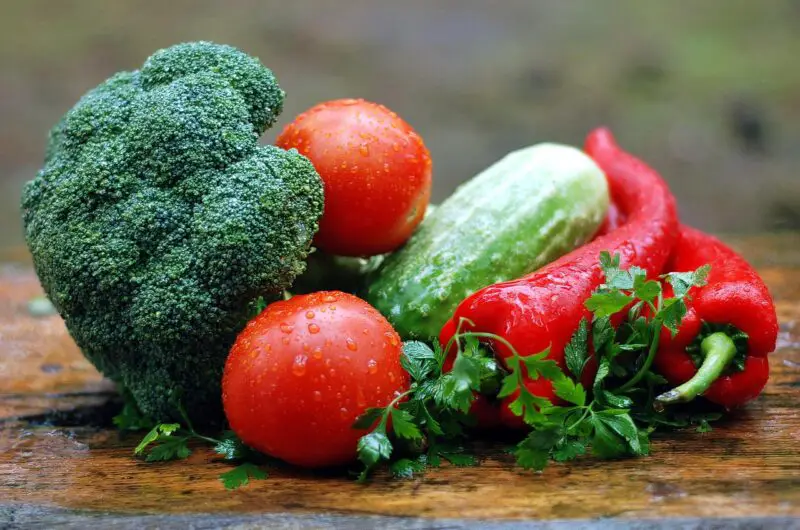The debate over organic versus non-organic foods has been simmering for decades, fueled by growing consumer interest in health, sustainability, and environmental concerns. Walk into any grocery store, and you’ll see shelves lined with products boasting “organic” labels, often accompanied by a higher price tag and an implicit promise of superior nutrition and purity. But is organic food always healthier? The answer isn’t as straightforward as marketing campaigns might suggest. To unpack this question, we’ll explore the definitions, production methods, nutritional differences, safety considerations, environmental impacts, and practical realities of organic and non-organic foods. By the end, you’ll have a clearer picture of whether the organic label truly delivers on its health halo—or if it’s more of a feel-good buzzword.
What Does “Organic” Mean?
Before diving into the health question, let’s define what “organic” actually entails. In most countries, organic food is regulated by strict government standards. In the United States, for example, the USDA Organic label means that a product was produced without synthetic pesticides, fertilizers, genetically modified organisms (GMOs), antibiotics, or growth hormones. Organic farming also emphasizes soil health, crop rotation, and natural pest control methods. For animal products, organic certification requires that livestock be raised on organic feed, have access to the outdoors, and avoid routine antibiotic or hormone use.
Non-organic food, often referred to as “conventional,” doesn’t adhere to these restrictions. Farmers may use synthetic chemicals to boost yields, ward off pests, or enhance growth, and livestock may be raised in confined conditions with antibiotics or hormones to prevent disease and promote faster growth. GMOs are also common in conventional agriculture, particularly in crops like corn and soybeans.
The organic label, then, is less about the food itself and more about how it’s produced. But does this translate to a healthier plate? Let’s break it down across several key dimensions: nutrition, safety, and broader impacts.
Nutritional Differences: Is Organic More Nutrient-Dense?
One of the biggest selling points of organic food is the assumption that it’s inherently more nutritious. After all, if it’s grown without chemicals and in richer soil, shouldn’t it pack more vitamins and minerals? Research, however, paints a more nuanced picture.
A landmark 2012 meta-analysis from Stanford University reviewed over 200 studies comparing organic and conventional foods. The conclusion? There’s no consistent evidence that organic fruits, vegetables, or meats are significantly higher in vitamins, minerals, or antioxidants. For example, levels of vitamin C in organic versus conventional tomatoes or iron in spinach showed negligible differences. A 2019 review published in Nutrients echoed these findings, noting that while some organic produce might have slightly higher levels of certain antioxidants (like polyphenols), the differences are small and unlikely to impact overall health meaningfully.
That said, there are exceptions. Organic dairy and meat sometimes show higher levels of omega-3 fatty acids, likely because organic livestock are more likely to graze on grass rather than grain-based feed. A 2016 study in the British Journal of Nutrition found that organic milk and meat contained up to 50% more omega-3s than their conventional counterparts. However, this benefit depends on farming practices—grass-fed conventional meat could theoretically match organic levels.
The takeaway? Nutritionally, organic and non-organic foods are more similar than different. Your overall diet—how much fruits, vegetables, and whole foods you eat—matters far more than whether they carry an organic label.
Safety: Pesticides, Antibiotics, and Contaminants
If nutrition isn’t the decisive factor, what about safety? Organic advocates often point to the absence of synthetic pesticides and antibiotics as a major health advantage. Let’s examine this claim.
Pesticides: Conventional farming relies on synthetic pesticides to protect crops from insects, weeds, and diseases. Residues of these chemicals can linger on produce, raising concerns about long-term exposure. The Environmental Working Group’s annual “Dirty Dozen” list highlights fruits and vegetables—like strawberries and spinach—with the highest pesticide levels. Organic produce, by contrast, uses natural pest control methods (like beneficial insects or plant-based pesticides), which are generally considered less harmful.
Studies, including the Stanford meta-analysis, confirm that organic produce has lower pesticide residues—about 30% less than conventional. However, both types often fall well below safety thresholds set by regulatory agencies like the EPA. Washing, peeling, or cooking can further reduce residues, regardless of how the food was grown. The health impact of low-level pesticide exposure remains debated—some animal studies link it to neurological or hormonal issues, but human evidence is less conclusive.
Antibiotics and Hormones: In livestock, conventional farming often uses antibiotics to prevent disease in cramped conditions and hormones to speed growth. Overuse of antibiotics contributes to antibiotic-resistant bacteria, a growing public health threat. Organic meat and dairy avoid these practices, which could reduce your exposure to resistant pathogens. Hormones, banned in poultry and pork but allowed in beef, have unclear health effects—some studies suggest a link to hormonal cancers, though the evidence is weak.
Contaminants: Organic isn’t a guarantee of purity. Natural pesticides (like copper sulfate) can still leave residues, and organic crops grown near conventional fields may pick up trace chemicals through soil or water. Meanwhile, conventional food isn’t inherently “dirty”—modern regulations and testing keep most contaminants in check.
Safety-wise, organic offers some advantages, particularly for reducing pesticide and antibiotic exposure. But the risk from conventional foods is often overstated, especially with proper preparation and a varied diet.
Environmental and Ethical Considerations
Health isn’t just about what’s on your plate—it’s also tied to the systems producing your food. Organic farming is often touted as better for the planet, which could indirectly benefit human health by reducing pollution and preserving ecosystems.
Organic methods prioritize soil health, biodiversity, and reduced chemical runoff. Studies, like one from the Rodale Institute, suggest organic farming can sequester more carbon, potentially mitigating climate change. It also avoids synthetic fertilizers, which can pollute waterways and harm aquatic life. However, organic yields are typically lower—sometimes 20-25% less than conventional—meaning more land might be needed to produce the same amount of food, which could strain ecosystems differently.
Conventional farming, with its higher yields, can feed more people per acre but often at a cost: pesticide runoff, soil degradation, and greenhouse gas emissions from synthetic fertilizers. GMOs, while controversial, can reduce pesticide use in some cases (e.g., Bt corn) but raise concerns about corporate control and ecological unknowns.
Ethically, organic often aligns with values like animal welfare and sustainable practices, appealing to consumers who prioritize these issues. Yet conventional farming has its own innovations—like precision agriculture—that aim to minimize environmental harm.
The health link here is indirect: a cleaner environment might mean fewer pollutants in your food and water over time. Organic scores points for sustainability, but it’s not a clear-cut win.
Taste and Perception: Does Organic “Feel” Healthier?
Beyond science, there’s a psychological angle. Many swear organic food tastes better—fresher, more vibrant. Blind taste tests, however, are mixed. A 2013 study in Food Quality and Preference found no consistent preference for organic over conventional produce among participants. Taste often depends more on freshness, variety, and preparation than production method.
Still, the organic label can trigger a “health halo” effect, where people perceive it as healthier and thus feel better about eating it. This placebo-like boost might encourage healthier eating habits overall, which could indirectly improve well-being.
Cost and Accessibility: The Practical Divide
Let’s talk money. Organic food typically costs 20-100% more than conventional, reflecting higher labor costs, lower yields, and certification fees. For a family on a budget, that premium can be a dealbreaker. A 2022 USDA report found that organic apples cost $2.50 per pound versus $1.50 for conventional—a gap that adds up fast.
Accessibility is another hurdle. Organic options abound in urban health food stores but may be scarce in rural areas or food deserts. Non-organic food, with its vast supply chain, remains the default for most. If organic is “healthier” but out of reach, how practical is it as a health strategy?
The Verdict: Is Organic Always Healthier?
So, is organic always healthier? Not quite. Nutritionally, the differences are minor—your diet’s quality matters more than its organic status. Safety-wise, organic reduces exposure to pesticides and antibiotics, but conventional food is generally safe within regulated limits. Environmentally, organic has an edge, though trade-offs like lower yields complicate the picture. Taste and perception lean toward organic for some, but data doesn’t fully back that up. And practically, cost and access tilt the scales toward conventional for many.
The real answer depends on your priorities. If you’re worried about pesticides or value sustainability, organic might be worth it. If you’re focused on nutrition and affordability, conventional holds its own. A hybrid approach—splurging on organic for high-pesticide items (like berries) while going conventional for others (like bananas)—could balance health and pragmatism.
Ultimately, “healthier” isn’t a monolithic label. It’s about what you eat, how it’s prepared, and how it fits your life. Organic isn’t a magic bullet, nor is conventional a compromise. The best choice is the one that keeps you nourished, informed, and in tune with your values—no certification required.


















